Improbable aviaprojects of the Second World War
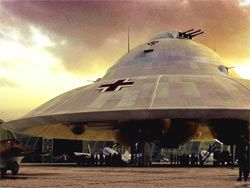
Traditionally at the time of wars of the country opponents and their allies put the maximum efforts to building of arms and development of new, more effective, military equipment. The Second World War was not in it an exception. Those years there were rather strange projects of aircrafts which were realized with various degree of success.
1. Blohm & Voss BV 141
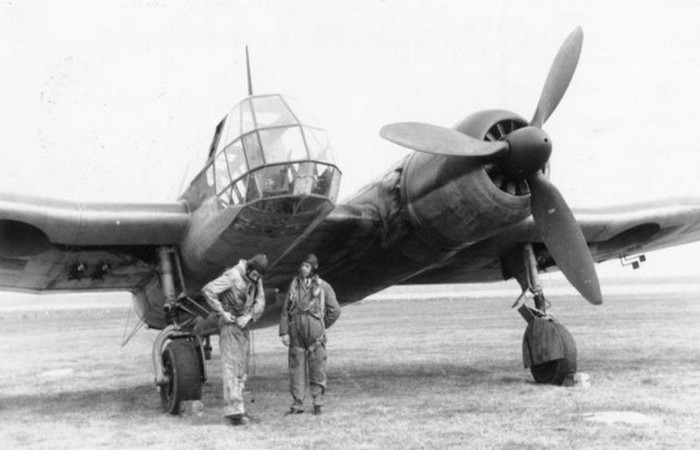
At the beginning of the Second World War the German Ministry of aircraft declared the tender for development of the new plane of tactical investigation which would be used for support of army operations. Two companies responded. Focke-Wulf developed quite ordinary two-engined Fw 189 plane. Designers of Blohm & Voss approached to a question more creatively, having created asymmetric Bv 141.
To the left of an axis of symmetry of the plane the fuselage with the engine and bombing hatches, and on the right a crew cabin settled down. Thanks to such unusual arrangement of a cabin, Bv 141 provided an unprecedented field of the review for the pilot and observers as when flying the review was not closed by the huge engine and rotating blades.
After tests of Luftwaffe ordered 500 such planes. However soon during bombing one of the main plants Focke-Wulf therefore the government gave the order was seriously damaged to use 80 percent of capacities of Blohm & Voss plant for creation of well proved fighters Focke-Wulf. Works on Bv 141 were finally stopped after 38 copies of the scout were constructed. During war all of them were destroyed.
2. Horten Ho 229
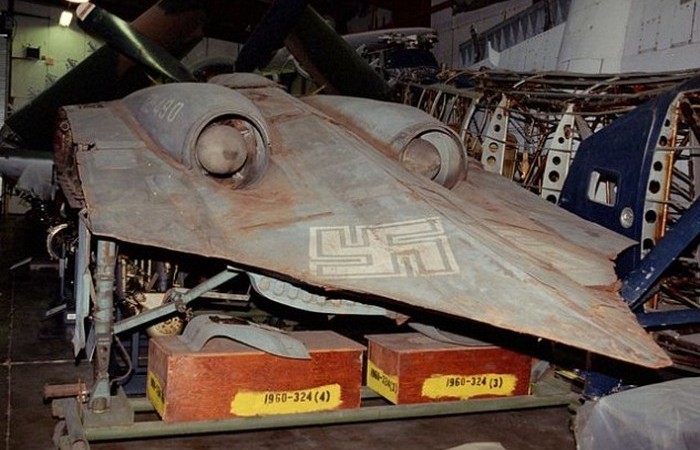
One more unusual nazi the project of the Horten Ho 229 plane was developed at the end of war after German scientists created technology of jet engines. By 1943 commanders of Luftwaffe understood that they made a huge mistake, without having started to build the heavy bombers similar to American B-17 or the British Lancaster. To fill this shortcoming, boss Lyuftvaffe Herman Goering gave the order to construct a bomber which could bear bombing loading in 1000 kg and have radius of action of 1000 kilometers at speed not less than 1000 kilometers per hour.
Brothers Reymar and Walter Hortena began design of the turbojet plane according to the scheme "a flying wing". Nazis managed to construct only one prototype which was grasped by armies of allies on the end of war by 1945. That is interesting, in 2008 engineers of Northrop Grumman created the remark Ho 229 based on the remained prototype which is in Smitsonovsky institute. At check on radar-tracking frequencies which were used during the Second World War, it was revealed that Ho 229 in fact was the first a stealth plane.
3. Vought V-173/XF5U-1
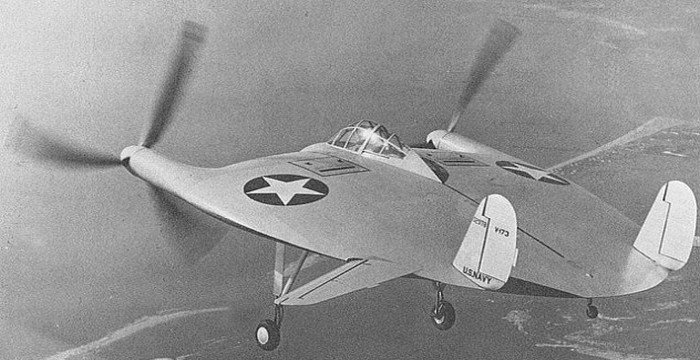
Since 1930th years the engineer of the Vought company Vout Charles H. Cimmerman started to experiment disk-shaped planes. As a result in 1942 in air the first prototype of "a flying pancake" V-173 rose. While its company continued to let out the well-known F4U Corsair for military needs, Cimmerman did not stop to work over the fighter in the form of a disk which finally became known as XF5U.
Flight characteristics of the new fighter surpassed all other planes of that time. Thanks to two Pratt & Whitney engines, XF5U should gather speed about 885 kilometers per hour. But while tests were carried out, the Second World War ended, and at Vought financial difficulties as the navy decided to pass to jet planes began. As a result the XF5U project refused, and the unique constructed prototype V-173 transferred in a museum.
4. Boulton Paul Defiant
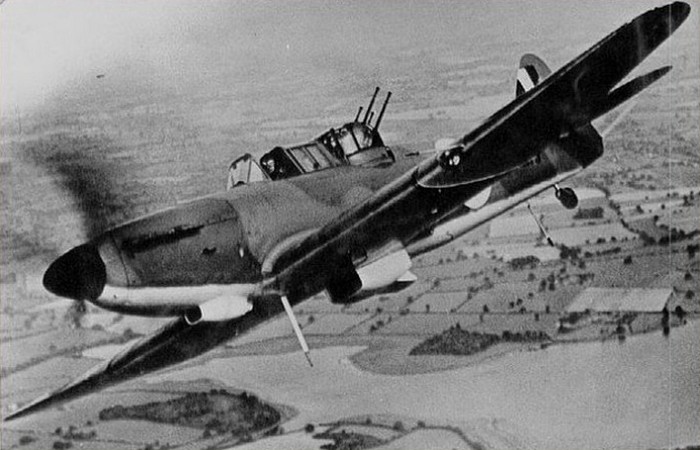
From all planes in this list, Boulton Paul Defiant it was applied most actively. Unfortunately, it led to death of many young pilots. The plane was developed on the basis of false assumptions of the 1930th years of how air warfare will develop further. The British commanders considered that bombers which will attack Britain, will fly generally without support. Just for such cases the heavy fighter which main feature was that it could shoot only back (all arms – 4х7, by machine gun 69-mm also was created – was established in a rotating tourist’s fir-tree behind a cabin of the pilot).
In the theory, it released the pilot from firing that allowed it to concentrate on flight, and also gave the chance to aim better to the shooter. The first departures passed successfully as nothing suspecting German fighter pilots wrongly took the plane for Hawker Hurricane similar by the form and attacked it from above or behind that was an ideal firing position for the arrow Defiant. But pilots of Luftwaffe quickly understood the mistakes and started to attack such planes from below or in front. In the absence of course arms and bad maneuverability because of a heavy tower, pilots of Defiant have huge losses during air fights.
5. Bell YFM-1 Airacuda

During the period between the First and Second world wars many countries were concerned possibility of strategic bombings. Therefore the heavy fighters intended for interception of bombers started to build the majority of large powers. The British Defiant appeared unsuccessful, and German of Bf-110 was rather multi-purpose plane.
Soon there was American YFM-1 Airacuda – the first military Bell Aircraft plane. In it the set of original and progressive ideas was realized. In particular, placement of two vperedstrelyayushchy 37-mm of guns M-4 in a forward part of motor-gondolas of engines, and also a back arrangement of screws was provided. Because of a number of defects and that Airacuda appeared too slow, operation of planes was stopped.
6. Antonov A-40
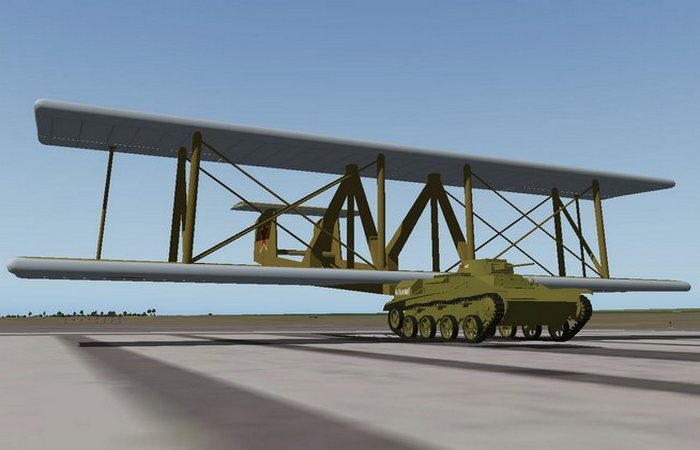
Military gliders played an important role in the Great Patriotic War because of the noiselessness. From all gliders of times of war the developed USSR A-40 – "the flying tank" became the most unusual. The majority of the countries was looked for by every possible ways quickly and effectively to deliver tanks to the front. Their transfer by means of gliders initially seemed remarkable idea, but engineers soon found out that tanks are one of the least aerodynamic vehicles.
After uncountable attempts to develop reliable system of delivery of tanks by air, the majority of the countries simply were given. But not Soviet Union. Being based on ideas of the American engineer John Walter Christie which originally developed the concept of the flying tank in the 1930th years, in 1942 in the USSR the huge biplane instead of which fuselage there was a T-60 tank was created. In spite of the fact that test flight passed successfully (the tank after a landing returned on base), the project was closed, as the USSR simply did not have planes enough powerful to tow a glider with the tank.
7. Junkers Ju-287
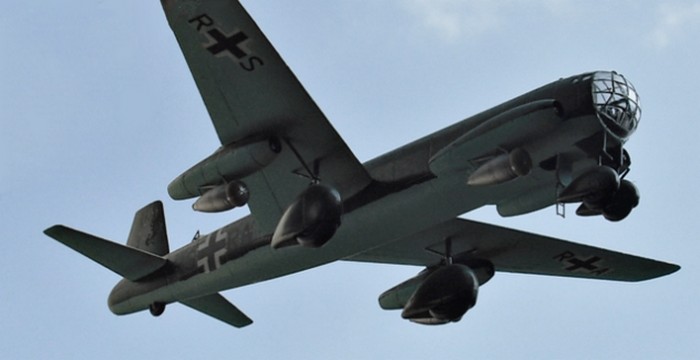
In 1943 the engineer of Junkers Hans Vokka became the initiator of creation of one of the most innovative planes of German aircraft of the Second World War: Ju-287. Engineers in the thirties understood that the plane with a direct wing will have the top limit of speed, but for that time of it excited nobody, as vintomotorny planes could not reach this speed. Nevertheless, with the advent of jet equipment, everything changed and feverish development began.
To Vokka offered the jet plane with a wing of a return strelovidnost which as he considered, would be to overtake in a condition any aviation equipment of that time. This new type of a wing had many advantages: increase in maneuverability on high speeds and the big angles of attack, the best characteristics of a svalivaniye and more compact arrangement of arms and engines. During test flights of Ju-287 proved to be excellently, having surpassed all expected indicators.
Unfortunately for Vokka, interest to a fast jet bomber weakened and its creation was postponed till March, 1945. As a result Germans simply were not in time. Interest to a wing of a return strelovidnost renewed only in 40 years.
8. Cornelius XFG-1
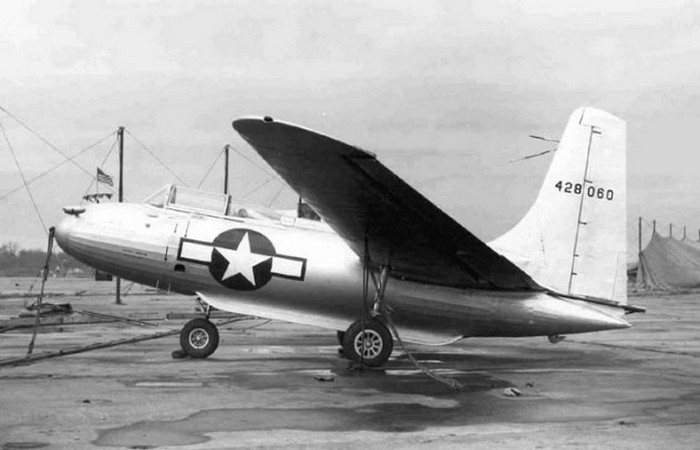
George Cornelius – the engineer known for development of many excentric designs of gliders and planes. When the Second World War began, Cornelius employed, that he developed XFG-1 – one of the most specialized planes for aircraft industry all the time. In effect, XFG-1 was a flying fuel tank which should tow for itself a strategic bomber, gradually pumping over fuel from tanks of XFG-1 and being uncoupled, when tanks of a zapravshchik опустевали.
9. Link SPB

The idea of a flying aircraft carrier appeared for the first time during the First World War. At that time military engineers dreamed to create a big dirigible balloon uterus which would let out links of small fighters for protection against enemy planes. The British and American tests ended with accident then everything refused idea, except the USSR.
In 1931 aviation engineer Vakhmistrov suggested to use Tupolev’s big bombers for transportation of fighters. During the thirties Vakhmistrov experimented various configurations, having stopped on five fighters attached to the TB-3 bomber (two I-5, two I-16 and one I-Z).
By the Second World War beginning Vakhmistrov reoriented the concept – now he suggested to use fighters, as diving bombers. To TB-3 started to suspend only two I-16, each of which bore 2 bombs FAB-250. Thus the radius of operation of fighters was increased. Despite successful flights, the project it was closed, when all I-16 and TB-3 were laid off in favor of more modern designs.
10. Fieseler Fi-103R
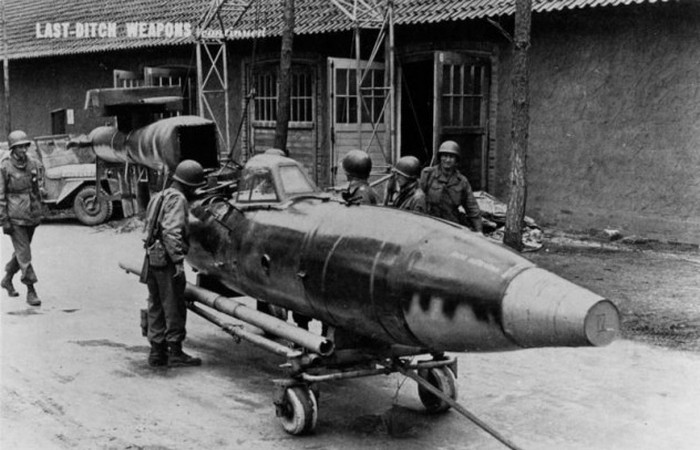
The majority of people are familiar with the concept of Japanese kamikazes which directed on the purpose the plane with explosive. German attempt to construct the similar weapon is less known, having turned V-1 cruise missiles (Fau-1) into the piloted. V-1 rockets had a huge potential, but they did not have enough accuracy. Having used existing fuselages V-1, German engineers could establish a small cabin ahead of the jet engine, and also basic elements of management for the pilot.
Unlike V-1 rockets which were started from the earth, the piloted Fi-103R rocket should be started from air, from the He-111 bomber. After the rocket was started, the pilot should precisely guide it at the purpose then to jump out with a parachute.
Teresa27










